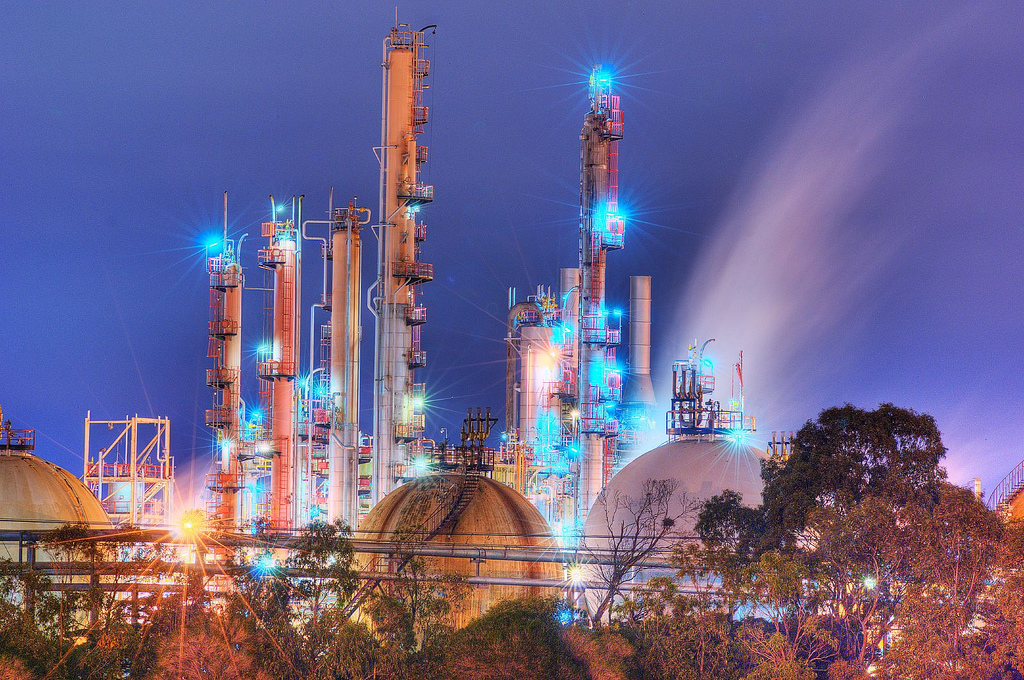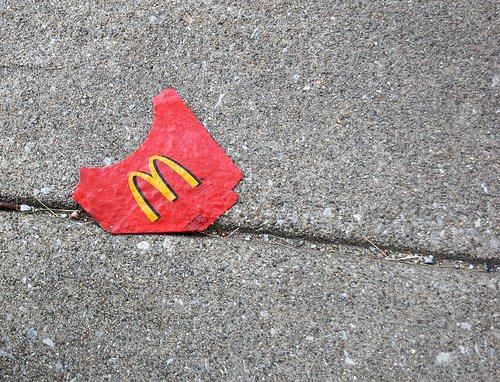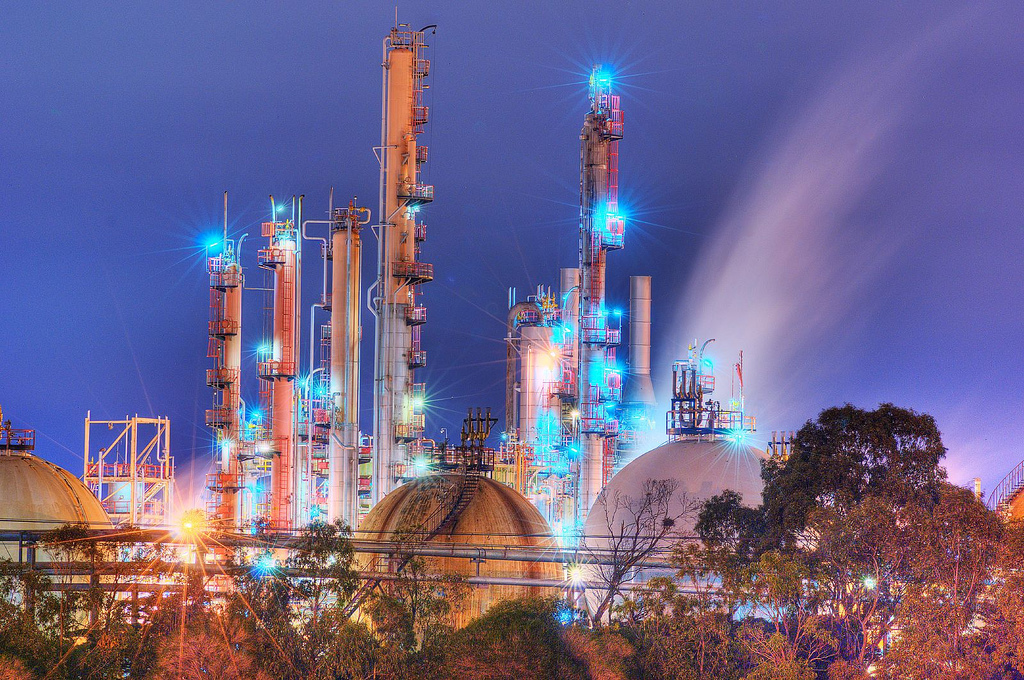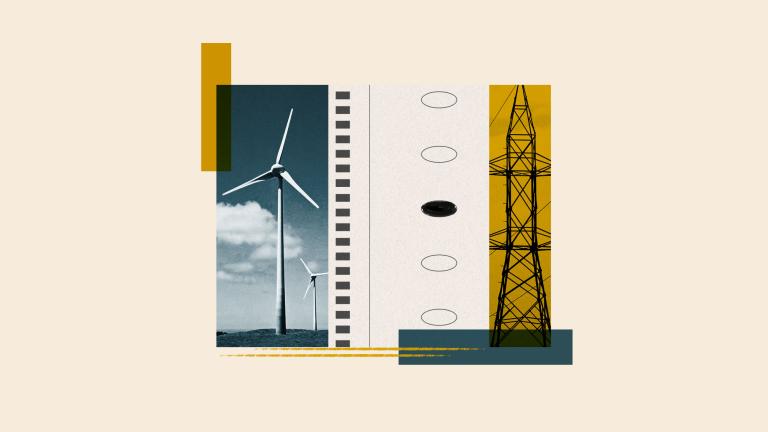 Sure, it’s pretty, but what the frack do we know? Photo: Vermin Inc.The New York Times has been running a series on natural gas, turning an appropriately critical eye toward the utopian claims of today’s natural gas boosters. Two of the biggest boosters have been industry analysts and the Energy Information Administration (EIA), but the two latest NYT pieces show that some industry insiders have their doubts, as do some people inside the EIA.
Sure, it’s pretty, but what the frack do we know? Photo: Vermin Inc.The New York Times has been running a series on natural gas, turning an appropriately critical eye toward the utopian claims of today’s natural gas boosters. Two of the biggest boosters have been industry analysts and the Energy Information Administration (EIA), but the two latest NYT pieces show that some industry insiders have their doubts, as do some people inside the EIA.
I am not an expert on natural gas market dynamics, nor on fracking. Both are complex and confusing topics and from what I’ve seen most people outside a small circle of researchers and analysts simply adopt whatever position best comports with their ideological commitments. (This is also true of, um, every other issue.) However, my ideological commitments lead me to contradictory and confusing positions toward natural gas, so I’m forced to try to puzzle it out.
Lacking any particular technical sophistication or access to primary data, us poor schmucks on the internet are forced to use crude heuristics to figure out who is trying to bullsh*t who. Here are the crude heuristics I’m using. (Your mileage may vary.)
1. History: Natural gas has been through booms and busts before. Power industry folk still recall the promises of eternal low natgas prices in the ’90s, which led to massive overbuilding of natgas plants, which led to today’s spare capacity. (Read about some of that history in Sean Casten’s great 2008 post.) Of course this time Everything Is Different because of fracking, but when it comes to fossil fuel booms and busts, everything is usually not different.
2. Projections: Everyone is now projecting an endless future of high supply and low prices, but when it comes to fossil fuels, such projections are almost always wrong. Not to say the projections will be too high or too low or whatever, just that they’ll be wrong. I, for one, would not bet millions of investor dollars on their accuracy.
3. WSJ Effect: The Wall Street Journal editorial board has a long piece vociferously defending natural gas boosters and their happy projections. There are very few analytical techniques in which I have absolute faith, but here’s one of them: if the WSJ editorial board says it, it’s probably wrong.
4. CEO pundits: Chesapeake Energy CEO Aubrey McClendon sent out an internal email to his company, responding to the NYT stories. It is chock-full of logically flawed arguments and right-wing talking points. Indeed, it sounds like it could have been written by the WSJ editorial board!
He begins by saying that the NYT series is the work of a liberal anti-business agenda fueled behind the scenes by radical environmental activists. Because that’s the kind of thing people say when they’re correct on the merits!
He argues the following: A bunch of rich companies are pouring money into natural gas. Why would they do that if supply estimates weren’t accurate? Raise your hand if you still view “tons of big investor money pouring into a sector” as reason for confidence in that sector. (cough*housing*cough)
He also notes that natural gas prices are down. How could prices be down unless the supply projections were accurate? Again, raise your hand if you view suppressed prices based on rosy long-term growth forecasts as a reason for confidence.
He also notes that Chesapeake’s accounting practices have been approved by regulators. Raise your hand if … eh, you get the picture.
McClendon also dismisses renewables, saying they are uneconomic without subsidies. Putting aside Europe, where long-term wind contracts are now competing with long-term natural gas contracts without subsidies, just ponder for a moment a man in the fossil fuel business, absolutely dependent at every turn on government policy allowing him to externalize costs, decrying a competitor’s subsidies. The irony is rich.
And finally, note this dog whistle at the very end: “You either create value in this world or you consume/destroy it — we are value creators.” For those of you fortunate enough to be unfamiliar with her work, that is some vintage Ayn Rand right there. In case you had any doubts about where McClendon is coming from.
5. The people I’ve talked to who are in or around areas being heavily fracked uniformly share a much more grim story than you hear in the national papers. They talk about companies lying and tricking people, workers being imported from other states so no wealth is left behind in local communities, pollution and health problems worse than is being reported, cozy relationships with regulators, etc., etc. These are the people whose voices typically go unheard until it’s too late. They also typically turn out to be right. (A long and fascinating High Country News piece gets into some of that.)
6. Michael Levi, whose judgment on such matters I generally trust, says the latest NYT pieces are overhyped; the reporter misunderstood some emails and confused some issues. He argues convincingly that there’s no big expose here. Most of the doubts and reservations from investors are well-understood by industry analysts and incorporated into economic forecasts. Then again, over at Natural Gas Watch they cite EIA reports that seem to confirm that “the current claims about the size and economic value of the various shale plays around the country rest primarily on valuations made by private companies, like Chesapeake, and that these claims are, in large part, unverifiable.”
So, where does that leave us? Well, I’m still keeping an open mind. But I see rent-seeking CEOs, big banks, and fossil fuel wildcatters lining up on one side. I see independent analysts, and beleaguered local communities on the other. It’s probably not a big surprise that my sympathies tend toward the latter. The whole thing reeks of a bubble to me.



